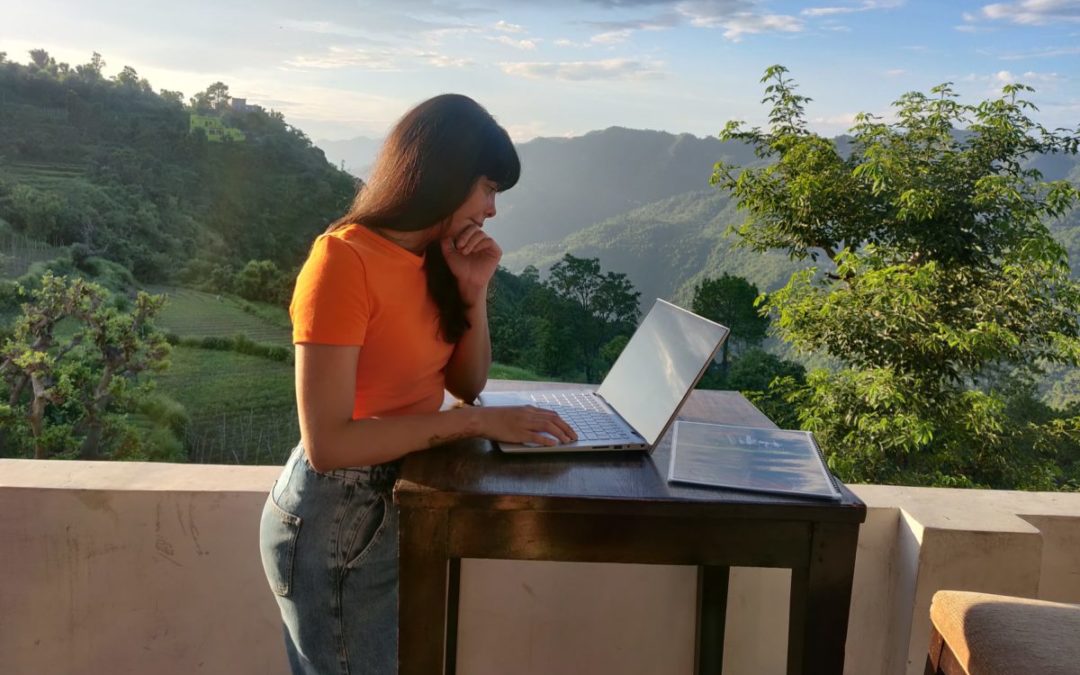Remote First is an approach to how work is done as much as where it is done. “Why do we have offices?” is a question that companies should be asking. It’s been interesting to watch how different companies have approached the remote work situation. A lot of companies have taken a “we need to get you back to the office” approach which is constantly reintroducing the COVID virus back into the workplace. Sometimes it reaches the point where there are so many cases in a particular building, that they finally just say, “uncle” and tell everybody to go home. Then they go through the process of cleaning and disinfecting and then try to bring people back in again.
Other companies, such as PWC have decided that they don’t need most of their buildings anymore and that remote is the future. Traditional offices may well be a thing of the past. It’s a relatively new invention. The modern office first emerged in London in 1726. It had two purposes. Providing storage for large quantities of paper and affording staff the opportunity for face-to-face meetings. In 2022, neither of these things are requirements, but we still use this as the model for how work should be done.
Why do we have offices?
Now there are reasons for having an office and a meeting place. But at least 50% of the space needs for commercial real estate are because we’ve always done it that way, not because there is an actual need. This is going to manifest itself in the collapse of the commercial real estate market over the next five to 10 years. The question for businesses to ask is “what does business look like for you taking a remote first approach to business?“
It’s not just about working remotely
Remote first is not about working remotely or working in the office. It’s a litmus test about how a company works in different locations, A lot of the issues surfaced when we went remote, but those issues were always there. They just were masked by some of the illusions that exist within a workplace, and that’s what we’re trying to unmask.
Most people would agree, if a business works well remotely, it works equally well, if not better, In-person. If the business doesn’t work well remotely, there are probably underlying issues that didn’t work well even when people were in the office. There were just illusions in place that looked like work was taking place and people were efficient. But the reality was never the case.
Taking a remote first approach does two things for a company; It unmasks where some of the difficulties are in communication, discrimination, productivity. And it also highlights costs that CFOs going forward will see as optional. Part of what we want to do with companies is explore what makes sense for them If they assume that work is done remotely first and in the office as a secondary location.
Why is Remote First Different than Working Remotely
Remote First isn’t just looking at the differences between remote work or working in the office. Remote First is taking a look at the office infrastructure and the business processes to determine what makes sense. What we have found is that some things simply do not apply anymore. Some companies will try to put the toothpaste back in the tube and assume that it’s 2019 again. Others have realized that we’ve been operating under the illusion that work needs to be done in an office building 100% of the time.
Companies can get to the point where they can work equally effectively, remote, or in an office. Also, they can have an office that makes sense for the type of business that they do. It may not be the office that they have right now. It may be a shared office it may be an office with extensive hotel space. This is for people that come and go regularly so the decorated cubicle and the decorated office may quickly become a thing of the past. For many companies, this quickly brings up the question “why pay for 50,000 square feet of office space when you can do the same thing for 10,000. It’s better for your bottom line. And it’s better for the people that work there as long as you put the right processes in place.



